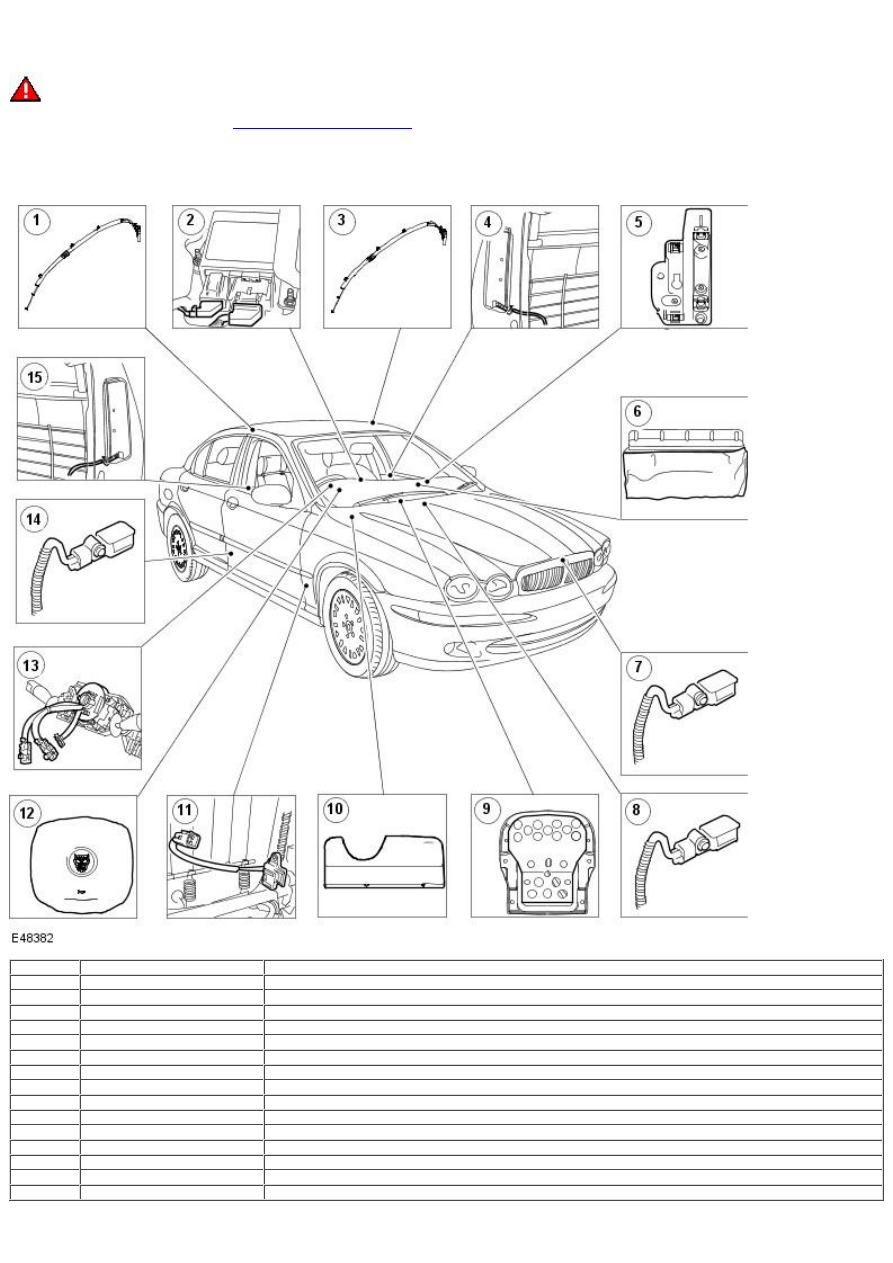Jaguar X-Type Sedan and Estate (Wagon). Manual - part 677

Published: 11-May-2011
Supplemental Restraint System - Air Bag Supplemental Restraint System (SRS)
Description and Operation
WARNING: All pyrotechnic devices are dangerous. Before performing any procedures on any pyrotechnic device, read all information
contained within the Standard W orkshop Practices section of this manual.
For additional information, refer to:
Standard W orkshop Practices
(100-00 General Information, Description and Operation).
The SRS is designed to provide increased collision protection for front seat occupants in addition to that provided by the three-point safety
belt system. Safety belt use is necessary to obtain the best occupant protection and to receive the full advantages of the SRS.
Air Bag Supplemental Restraint System (SRS) Components
Item
Part Number
Description
1
—
Side air curtain module
2
—
Restraints control module (RCM)
3
—
Side air curtain module
4
—
Side air bag module
5
—
Passenger air bag deactivation (PAD) indictor
6
—
Passenger air bag module
7
—
Crash sensor
8
—
Side impact sensor
9
—
Passenger weight sensor
10
—
Driver lower air bag module
11
—
Seat track position sensor
12
—
Driver air bag module
13
—
Air bag sliding contact
14
—
Side impact sensor
15
-
Side air bag module
Restraints Control Module (RCM)
The restraints control module (RCM):